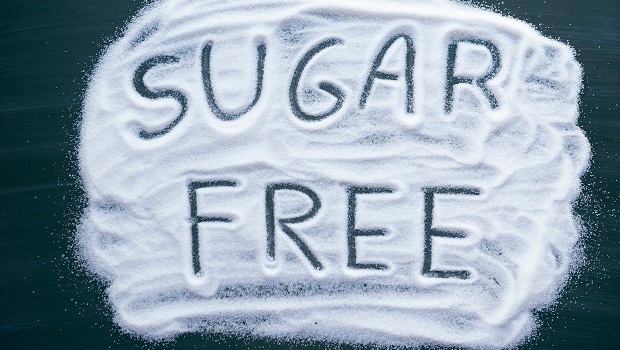The Pitfalls of Making Free Claims in Food Labeling
Companies with reformulated products would then need to promote the advantages of the products by using statements like “free" on the food labels. There are a number of rules to be followed in order to make “free" food label claims that will be acceptable to regulators.
October 14, 2015

There is growing interest in updating processed food recipes to remove artificial ingredients, such as synthetic colors, flavors and preservatives) and other food substances that some consumers want to avoid, such as gluten and GMO (genetically modified organism) ingredients. Companies with reformulated products would then need to promote the advantages of the products by using statements like “free" on the food labels. There are a number of rules to be followed in order to make “free" food label claims that will be acceptable to regulators.
Users of a “free" claim made on a food label must take into consideration whether the claim is being made about a nutrient (e.g., fat free) or something other than a nutrient (e.g., preservative free). Claims that a food is free of a nutrient are permitted only where there is an FDA nutrient content claim regulation authorizing the claim for that nutrient. The nutrients for which there are FDA-authorized free claims include calories, total fat, saturated fat, cholesterol, sodium and sugar. Label statements that fall under the FDA free nutrient content claim regulations include both those statements that use the exact language given in a free claim regulation (e.g., sugar-free, free of sugar, no sugar, zero sugar, without sugar, sugarless, trivial source of sugar, negligible source of sugar, or dietarily insignificant source of sugar) and any representation that would reasonably be expected to represent the food to be free of the nutrient.
There is a provision in FDA’s general nutrient content claim regulation that allows quantitative statements about a nutrient amount to be made outside of the authorized nutrient content claims. Under this provision, a food can be represented as being free of a nutrient even though the nutrient is not among the six for which there are authorized free claims. For example, although “trans fat-free" and “zero trans fat" are not permitted claims, “0 grams trans fat" is permitted under the regulation as a quantitative statement. Including the unit of measurement (i.e., grams) makes the statement a “quantitative statement" rather than a “zero" or “free" claim. There are a few points to be mindful of when using quantitative statements of nutrient amounts. For the FDA-authorized free claims, there is a defined threshold below which FDA considers the amount of the nutrient to be negligible and is declared as “0" in the Nutrition Facts (e.g., less than 0.5 g of sugars per serving is an insignificant amount). To use an FDA-authorized free claim requires the level of the nutrient to be less than the threshold, not necessarily absolutely free of the nutrient. However, there are no “insignificant" thresholds for quantitative statements—0 g of a different nutrient means absolutely zero; no measurable amount. Another point to consider is that because the “quantitative statements" provision is in the general nutrient content claim regulation, the disclosure requirement for high levels of total fat (13 g), saturated fat (6 g), cholesterol (60 mg) and sodium (480 mg) applies. The required disclosure statement (See nutrition information for ___ content) must be placed next to the claim. (See 21 CFR 101.13(h) for details.)
Claims that a food is free of non-nutrient substances are not subject to the FDA nutrient content claim regulations. FDA’s nutrient content claim regulations provide some examples of types of label statements that are generally not implied free nutrient content claims (e.g., statements about absence of non-nutritive substances such as color additives or preservatives). Also not considered implied nutrient content claims are statements designed to facilitate avoidance of substances for reasons such as food intolerance, religious beliefs or dietary practices such as vegetarianism. As such, there generally are no regulatory restrictions on such claims other than the general provision that all label representations must be truthful and not misleading.
There is one situation where there is an FDA-regulated free claim for a non-nutrient: gluten-free claims. The gluten-free claim regulation sets the threshold for a gluten-free claim at 20 ppm gluten derived from any variety of wheat (Triticum spp.), Rye (Secale spp.), or barley (Hordeum spp.). There are third-party organizations that provide gluten-free certification services. An independent “certification" is not required under the FDA regulation for using gluten-free claims on a food label.
FDA issued a draft guidance document in 2001 advising on the voluntary labeling of foods that have been formulated with ingredients not developed from bioengineering. Although issued as a draft guidance, FDA warning letter charges have been based on this draft. Among FDA views expressed in the guidance document is that the terms “genetically modified" and “GMO" are technically inaccurate, as even traditional plant breeding modifies the genetics of a plant. FDA prefers the terms “genetically engineered" and “bioengineered," but has obviously lost to public opinion on this issue. Another issue, however, where the FDA position is more resolute, is that “free" means absolutely zero and must be substantiated. The substantiation for “GMO-free" might require a validated test confirming absence of any markers for GMOs, or by verified record-keeping to track ingredients from seed to finished food. There are-third party organizations that provide such services. FDA advised that rather than “free," a better statement would address ingredients that were not genetically engineered. This statement could be substantiated using certifications from ingredient suppliers that the ingredients had not been genetically engineered.
Under FDA policy, natural is in some ways an implied free claim. FDA’s policy on natural allows the claim only when the food contains no added colors, artificial flavors or other synthetic substances. This implied “free" claim is based on which ingredients are used in the product and does not require analysis showing zero. Natural claims must be used carefully. While they are not a high enforcement priority for FDA, they are a frequent target for litigation. A number of suits have been filed against manufacturers for products that bear natural claims but are made with synthetic substances such as citric acid or erythritol. Some of these suits are also charging that the product is not natural because it is highly processed. Still another set of suits argue that to be natural a product must also be GMO-free. FDA has not spoken on this aspect of natural and it has not been settled in court.
There are many regulatory pitfalls in making “free" claims. Manufacturers need to be well-informed on the particulars of the specific claim they wish to use.
James Hoadley, Ph.D., is a senior consultant and Elizabeth “Betty" Campbell is senior advisor for labeling and claims with EAS Consulting Group LLC (easconsultinggroup.com). Hoadley joined EAS in 2007 following a long tenure at FDA, most notably spending 10 years as a senior regulatory scientist in the Office of Nutritional Products, Labeling and Dietary Supplements (ONPLDS) with primary responsibilities in food label claim regulations. Campbell has been consulting with EAS and previously with AAC since 1999, following over 30 years at FDA, most recently as the Acting Director of the Office of Food Labeling, Center for Food Safety and Applied Nutrition (CFSAN).
You May Also Like




.png?width=800&auto=webp&quality=80&disable=upscale)